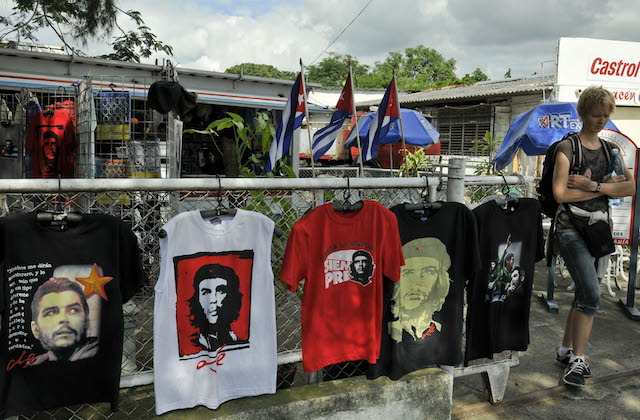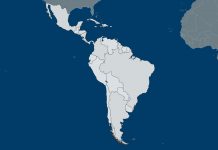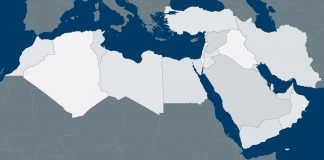By George Friedman
Fidel Castro died at age 90 over the weekend. In some ways, it was his misfortune to have lived this long. An old Fidel stood in stark contrast to the 33-year-old revolutionary who swept into Havana on New Year’s Day in 1959, ultimately appalling the leadership of the United States and capturing the imagination of many baby boomers, then emerging into political consciousness. It was not his politics that excited them as much as the vision of a man just older than themselves on an adventure worthy of Hollywood, seizing control of a country and doing good and cool things. He excited the worst fears of the World War II generation, and the boomers’ greatest fantasies about themselves. But this was a long time ago, when Dwight Eisenhower was president of the U.S., Nikita Khrushchev ruled the Soviet Union and Josef Stalin had died only six years before. Fidel had significance then. Today, he is remembered fondly by the old and ignored by the young, who wear T-shirts with “Che” Guevara’s picture, not quite knowing who he was. Old age did not suit Fidel.
A tourist walks next to a street stand displaying t-shirts depicting Argentine-born guerrilla leader “Che” Guevara, in Santa Clara, on Dec. 30, 2008. STR/AFP/Getty Images
Perhaps his most significant impact, apart from in Cuba, was that he inspired a generation of leaders in the Third World. They were faithful to him. That was unfortunate because beneath the mythology, Fidel was a dedicated communist. There has been much debate over whether he was a communist when he took Havana. The myth that was built by his non-communist admirers in the West was that he was forced into being a communist because of the hostility of the U.S.
The problem with that theory was that the Eisenhower administration was more bemused by him than frightened. The administration made no attempt to block his coming to power, in large part because it had little use for the man he overthrew, Fulgencio Batista. Any alarm the Eisenhower administration felt was when Fidel started seizing American-owned property in Cuba, on the premise that this property belonged to the Cuban people and represented imperialist exploitation.
Fidel was a communist from the get-go, and the claim that he only became one because the U.S. compelled him into it, was false. The people close to him, his brother Raúl and Guevara (an Argentine who attached himself to Fidel while both were in exile in Mexico City), were hard-core communists. Some in this movement weren’t communists. Camilo Cienfuegos was not. He is believed to have died in a plane crash soon after the revolution’s triumph. His death may have been an accident, but the executions that were managed by Guevara were no accident, and Fidel clearly supported them. He imposed a reign of terror in the spirit, if not detail, of Lenin to guarantee his control of the country.
The exodus from Cuba that lasted for decades was dismissed by his Western supporters as merely the bourgeoisie fleeing because they were no longer permitted to suck the blood of the poor. But the roughly 1.5 million who left were not just the wealthy. Cuba didn’t have 1.5 million rich people. The people who fled first were the professional class and later the poor. It is important to bear in mind that while there was flight, the regime sought to block it most of the time, and there were penalties for attempting to flee. One characteristic of communist states is that they have fences and guards, not to block people from entering, but to block people from leaving. Unlike the Soviet walls, Fidel’s were inefficient. The most exciting thing he did was to overthrow Batista. The rest was a tale of squalor and failure.
A few years after the revolution, Fidel asserted that for the first time all Cubans had medical care and education. The quality of both is questionable, but at least all Cubans had access to them. Fifty years later, this remained Fidel’s primary justification for the revolution. His basic claim was that Cuba was poor because of American exploitation. When the U.S. broke economic ties with Cuba, the claim became that Cuba was poor because the U.S. would not trade with it. His supporters saw no irony in this. And the fact that all of Europe and Latin America continued to trade with Cuba did not in any way affect his claim that the reason for Cuban dysfunction and poverty was the Americans. He never considered the possibility that it was communism.
Fidel was an important symbol for café revolutionaries and Third World revolutionaries aspiring to be dictators. But his real importance was that he helped open the door for the Soviets, who were trying to achieve strategic equality with the U.S. After World War II, the U.S. developed a strategic bomber force that could strike the Soviets with nuclear weapons. The Soviets did not develop an equal force, focusing instead on developing a missile capability that could strike back. By 1962, the first of the intercontinental range ballistic missiles had been deployed, but they were few and unreliable. In any nuclear exchange, the U.S. would demolish the Soviet Union. This blocked the Soviets from serious adventures elsewhere.
With the creation of a communist regime in Cuba — in 1959, when the Soviets were even weaker — the possibility of placing short-range missiles near the U.S. emerged. The Soviets had more and better short-range missiles. If they pulled that off, it would neutralize the American advantage and free superior Soviet conventional power to move. For the Soviets, Fidel’s glamor was far less impressive than his geographic location. The KGB became the guardian of the regime from foreign threats, warning Fidel about the Bay of Pigs for example, and shutting down American intelligence operations in Cuba. The class struggle was one thing. But geopolitics was everything.
Fidel became dependent on the Soviets not only for aid but also for security. The Soviets were dependent on Cuban territory for a Hail Mary attempt to achieve nuclear parity. The result was the Cuban missile crisis, in which the Americans threatened nuclear war if the Soviets didn’t withdraw their missiles. A deal was reached. The Soviets would withdraw missiles from Cuba, the U.S. would withdraw unimportant missiles from Turkey, and the U.S. guaranteed not to invade Cuba or attempt to overthrow the communist regime there.
It was this deal that permitted Fidel to live to be 90 as the leader of the revolution. In the end, it was not the regime’s success that guaranteed his survival but a deal made over his head by the Soviets and Americans. Fidel became a leftover of the Cold War. And after the Soviet Union collapsed, he survived in part because the U.S. didn’t care about him, and in part because countries like Venezuela gave him charity. He died having failed to make Cuba a paradise, and blamed everyone but himself. But worst of all for Fidel, he died an anachronism of an era that ended 25 years ago. The myth of Fidel lives among the radical boomers who still fantasize on going into the Rockies as Fidel went into the Sierra Maestra, but those radicals were few to begin with, and today even the fantasies are limited by old age. Perhaps the worst for Fidel, the T-shirts bear the face of the man who ran the executions, Guevara, and not Fidel’s. And, in the final irony of this farce, the people wearing the T-shirts likely oppose capital punishment, but glorify a man who imposed it so eagerly.
Fidel is dead, and for those who care about what comes after him, I cannot help but shrug. What he created after his bloody revolution was nothing more than squalor. It will take a generation to undo what he did. But in the end, Cuba’s time as the center of global attention is long past. They say he still fascinates, but what they mean is that his past fascinates, and in the rest of his life, little of importance happened.








 The Geopolitics of the American President
The Geopolitics of the American President